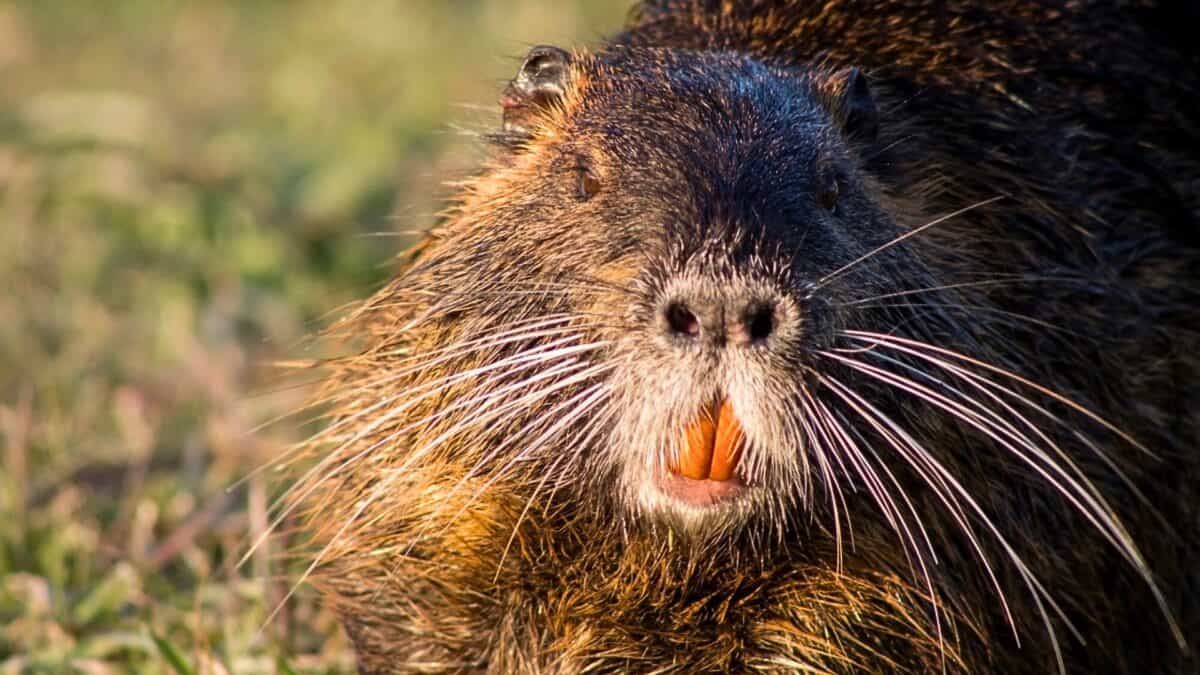Rats are a common sight in most cities around the world and are typically seen as unwanted guests. Now imagine they’re two feet long and 20 pound heavy, that’s the kind of rodent that is currently invading California.
This creature called Nutria, which additionally has orange teeth, is causing significant damage to the environment, crops, and infrastructure.
What Is Nutria, and Why Are They a Problem?

Nutria, also known as coypu, are large rodents native to South America. They weigh up to 20 pounds and can grow over two feet long. Known for their bright orange teeth, these herbivores have a destructive habit of burrowing near water sources. This activity weakens levees and causes erosion, making them a significant threat to infrastructure.
How the Nutria Made Its Way Here From South America

Nutria, native to South America, were brought to the United States in the late 1800s for their fur.
After the fur market collapsed in the 1940s, many nutria were released or escaped into the wild. Without natural predators in their new environment, nutria populations quickly grew, spreading across multiple states.
However, its presence in the state of California is relatively new – and panic is spreading for many reasons.
1,000 Nutria Captured This Year Alone
Since the discovery of the first nutria in California in 2017, over 5,000 have been eradicated. This year alone, nearly 1,000 were captured in the San Francisco Bay Area. However, the total population size remains uncertain, as the species is highly prolific.
Recently, they have moved into Contra Costa County’s California Delta, a vital water source for the state, raising concerns about their impact on this critical area.
Why They’re Posing a Serious Threat to California
Nutria are highly destructive to crops and wetlands. They consume up to 25% of their body weight in vegetation daily. But that’s not all; they waste and destroy up to ten times that amount. Their feeding habits have led to significant crop losses and damage to marshlands, which are essential for many native species and California’s agriculture.
Diseases Spread by Nutria

Nutria pose a risk to humans, pets, and livestock because they can carry diseases like tuberculosis, septicemia, and tapeworms.
Contact with contaminated water can lead to infections, making them a public health concern. Their ability to transmit diseases has made officials more vigilant about tracking and controlling their spread.
Why Nutria Are Difficult to Control
One of the biggest challenges in managing the nutria population is their rapid reproduction.
Females can give birth to as many as 27 offspring per year across two to three litters. With no natural predators in California, their numbers have increased quickly, making it difficult for wildlife authorities to keep their population in check.
Damage to California’s Water Infrastructure

Nutria’s burrowing activity poses a threat to California’s water management systems. The California Delta, a crucial water channel for agriculture and human consumption, is particularly vulnerable. Their burrowing weakens levees, increasing the risk of flooding and compromising water quality. This makes the control of nutria in the Delta a priority for state officials.
How California Is Responding to This Massive Rodent Invading the State

Residents are urged to report sightings to the California Department of Fish and Wildlife. It is also legal to shoot nutria outside of city limits, and wildlife officers are authorized to use humane methods to manage their population.
The invasion has already caused significant environmental and economic damage, and further spread could jeopardize California’s agricultural output and water resources.
- These are the Largest Wildfires in History - June 27, 2025
- These Countries May Become Inhabitable As the Earth Warms Up - June 27, 2025
- Exclusive Footage: Sperm Whales Befriend Deformed Dolphin - June 27, 2025

